Home » Migratory Bird Species » Snipe Hunting » How to Hunt Snipe with Decoys
How to Hunt Snipe with Decoys
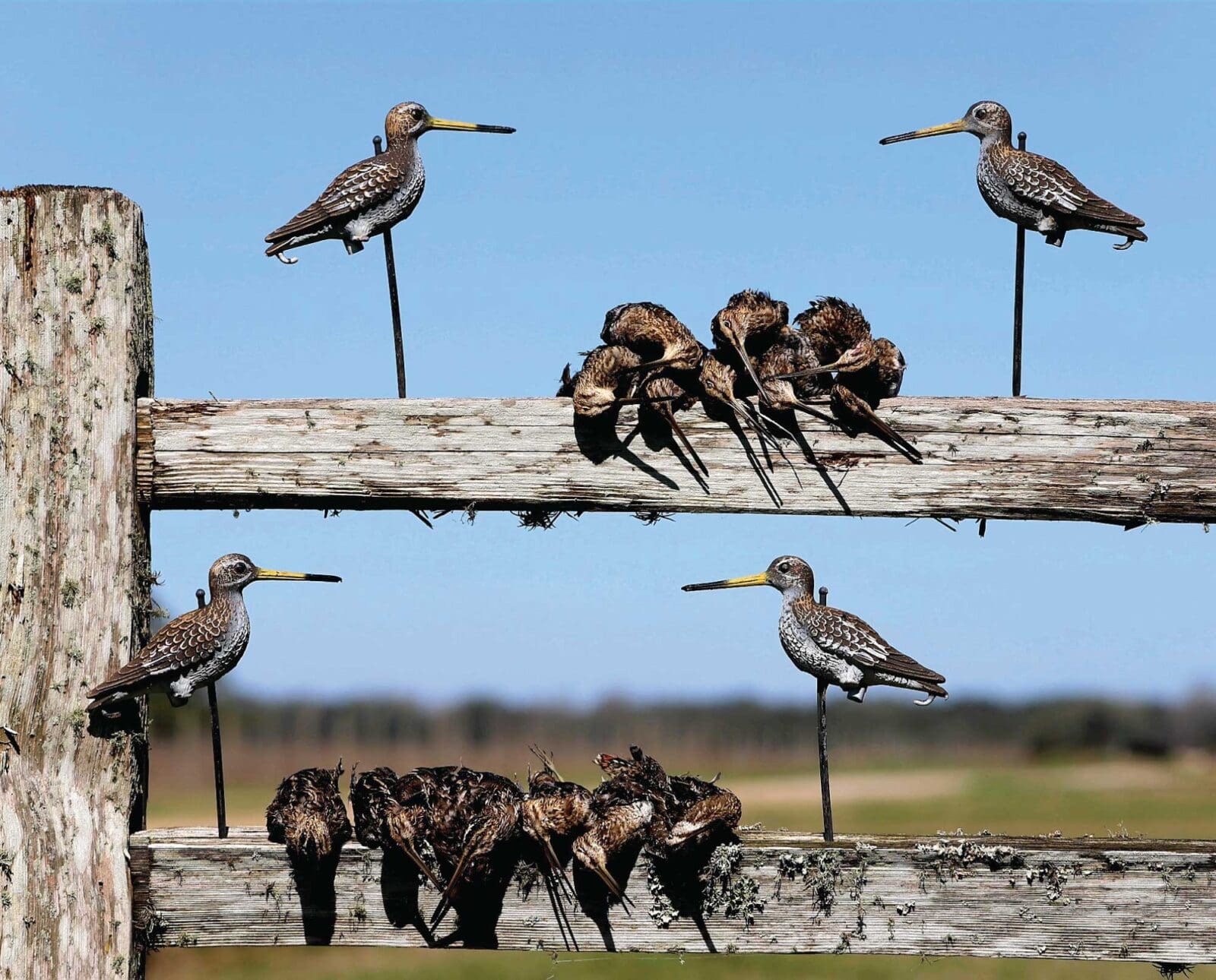
R.K. Sawyer lives in Sugar Land, Texas, and is the…
Using snipe decoys is an effective but overlooked method of snipe hunting.
Snipe shooting over decoys is a relatively obtuse technique and not widely practiced. There’s probably wisdom in that! A good shooter can kill as many, maybe more, by simply walking them. But, as a dedicated practitioner of decoy snipe hunting, and after a bit of soul searching, I’ve convinced myself of a couple of good reasons why – sometimes – it’s a worthy endeavor.
Listen to more articles on Apple | Google | Spotify | Audible
First, I’ve found that I can introduce others to snipe hunting with the lure of a decoy hunt. A shoot from a comfortable blind with only a short walk is infinitely more appealing than a trudge through black gumbo mud with shots at twisting, rising-then-falling birds that often exit tens of yards from reasonable gun range.
Second is that I’m a purist. I’m one of those people who, even if birds were going to alight in my spot anyway, appreciate the look and feel of birds falling into a rig of decoys. It’s part thrill, part tradition. Decoys reflect our waterfowl hunting heritage, a bridge between the shooting sports and American folk art. I guide a few hunting parties each year that avoid modern plastic and battery-operated spreads, preferring to hunt over hand-carved and -painted wooden blocks even though it might mean fewer birds in the bag.
Decoying Snipe Patterns and Behaviors
Anyone who has pursued waterfowl over decoys knows the textbook habits of the different birds they hunt. There are the diving ducks that usually fly low to the water and commit unsparingly to blocks set on broad, often roiling waters. In contrast are pintails, which notoriously approach a puddle duck decoy rig with frustratingly high, arching circles before, sometimes, lighting just beyond gun range. Then there are the September flights of blue-winged teal that oblige a spread from every possible direction, entirely unconcerned that man, beast, boat, or machine may be in plain sight among the decoys.
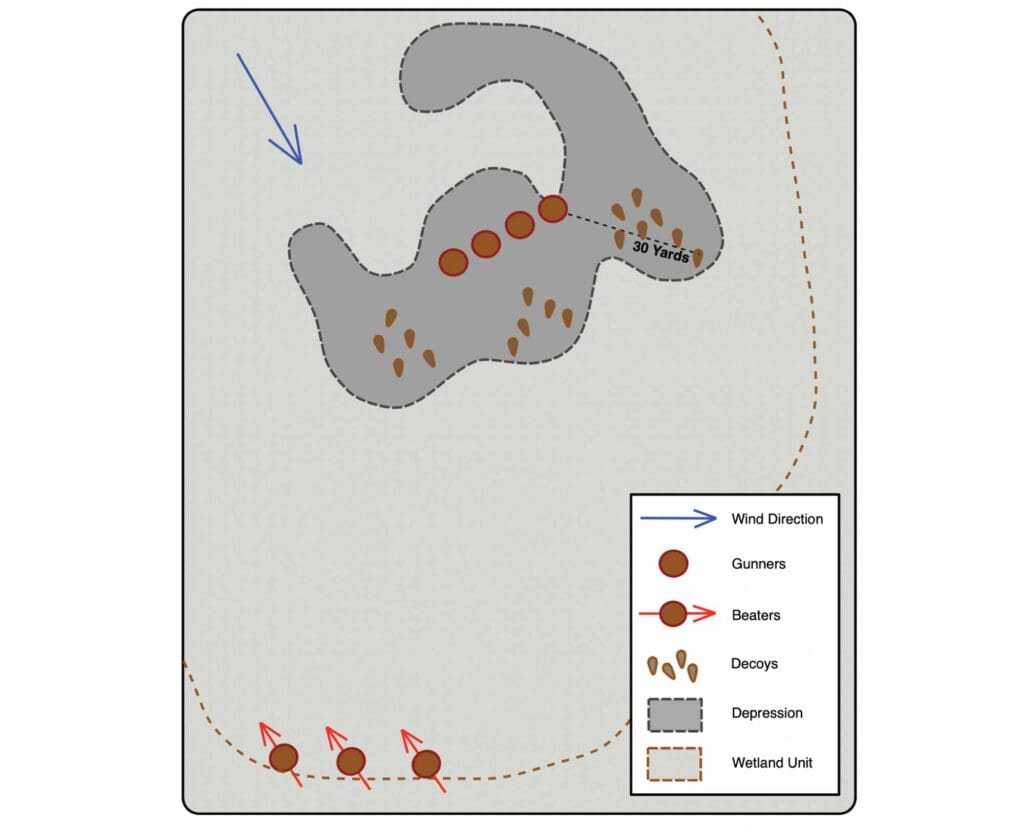
Snipe decoying resembles none of these classic duck decoying patterns. You’ll probably decide that they have no decoying consistency at all. I liken the utility of decoys for snipes to that of snow goose hunting. A curious comparison, for sure, but in the not-so-long-ago era before snow geese were pursued on an industrial scale up and down the Central Flyway, they were hunted very simply over white cloth rags. The wily white geese mostly avoided those spreads, but there were times when they decoyed perfectly. The image of that large bird cupped over their counterfeit brethren was one indelibly burned into the consciousness of hunters, young or old. But not every hunter; many recognized that there was folly in working so hard, and it’s far easier to observe the flight pattern of those geese and then find a comfortable fence line to pass shoot them.

The same arguments can be made for snipe hunting over decoys. Much like white geese, seasoned snipe hunters often ask themselves if their decoys helped their hunt. Sometimes, the answer is yes. Assuming the reader can appreciate any of the reasons why anyone would take to the field to hunt a diminutive brown bird over decoys – and that is no small hurdle – then let’s consider equipment, strategies, and what to expect from your endeavor. That is, if hunters can consistently expect anything from this game bird at all!
What You Need to Hunt Snipe Over Decoys
The only equipment that differentiates snipe hunting over decoys from any other hunt is a portable blind and a half dozen or so decoys. Lightweight, portable blinds allow the hunter to go to the birds. Plenty of portable blinds are available in the marketplace today, although simple, inexpensive blinds can be quickly fabricated from cattle panels or even chicken wire.
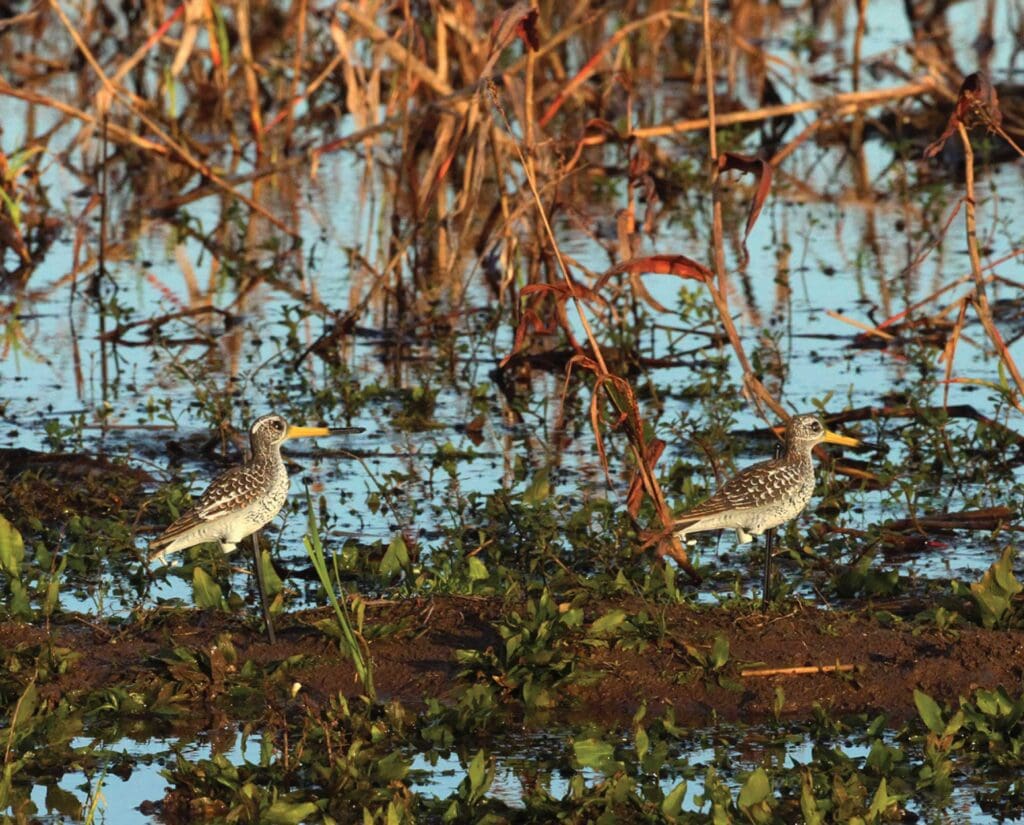
You’ll probably find that hardly anyone sells snipe decoys. In fact, it’s easier to find imitation great blue herons, owls, or even pink flamingoes. I located them from the Italian manufacturer Sport Plast, an intriguing company that carries hundreds of original outdoor products and some decoys that I never knew existed, such as wood pigeons, cormorants, magpies, larks, godwits, plovers, and even falcons. Even if you’re not in the market for snipe decoys, their catalog (https://www.sportplast-decoys.com) is entertaining to read. Mercifully, I did not have to translate my decoy order into Italian; Sport Plast snipe decoys are carried in the USA by Knutson’s Sporting Goods (http://www.knutsondecoys.com), located in Brooklyn, Michigan.
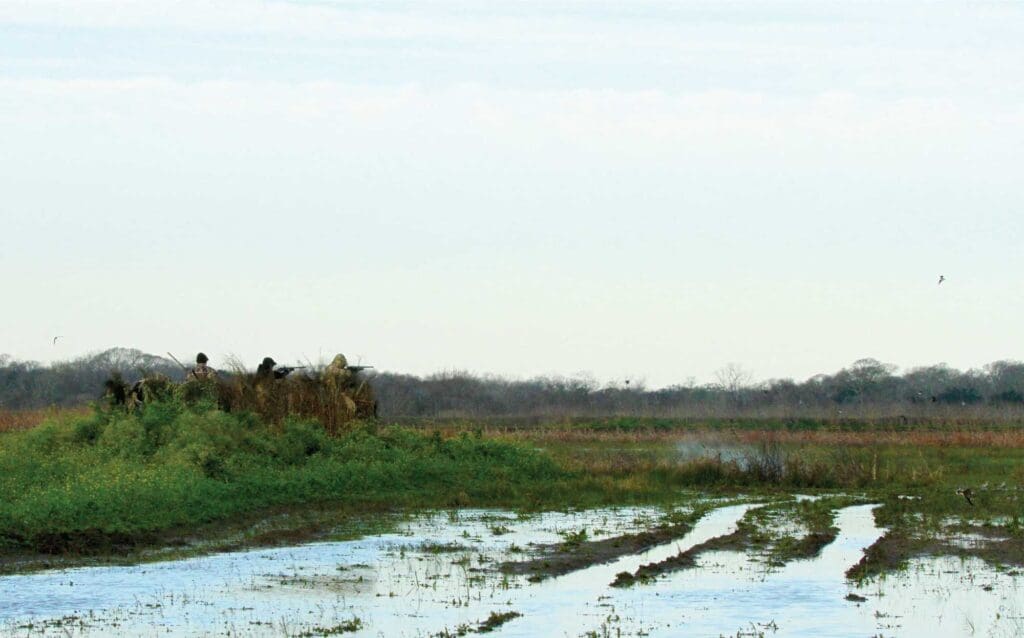
Snipe Hunting Strategies Over Decoys
Besides the presence of birds, the most crucial ingredients to a successful snipe hunt over decoys are location and location. Selecting a potentially foolproof site for snipe habitat requires scouting, and lots of it, whether you are hunting marshes, pastures, fallow fields, or rice fields. I walk wetlands and then wait. I’m looking for a repeatable rising or a landing pattern, a place that attracts snipes consistently. On a successful scout, the birds tell you where they – and you – want to be.
You can also fine-tune prospective hunting options by studying the lay of the land. Look for a focusing point on the landscape. A large wetland complex may contain hundreds of snipes, but typically just a few spots have the right “skinny” water level, black mud, and ideal vegetation height and density. A good example is a low area within a shallow wetland complex or, conversely, a more elevated, muddy mound in a deeper unit. Think of it as “topography within the topography,” and try to find those sweet spots. Snipes will rarely decoy where they don’t want to be.
Patience is a virtue. If you don’t have it, use beaters. On a good day, the snipes you jump on your way to the blind will begin returning within about half an hour. On a bad day, they go somewhere else – and stay there. Beaters can often change a hunt from a slow one into a highly productive one.
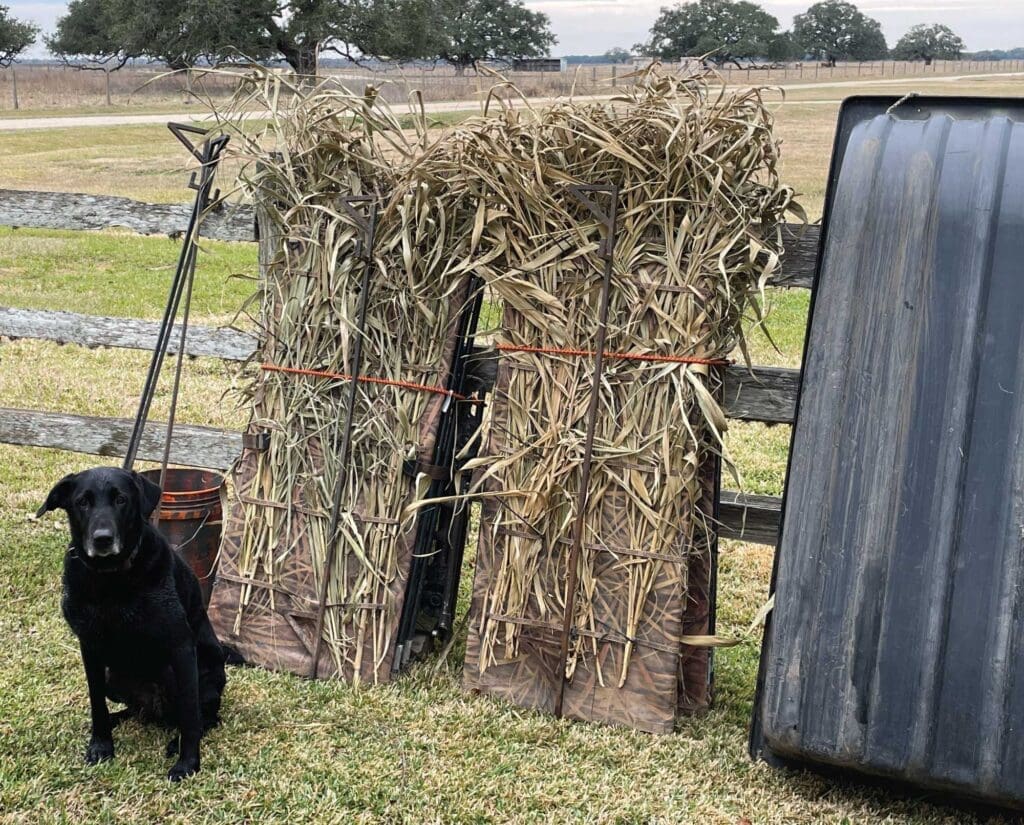
When planning your blind set, it is helpful to find relatively firm footing and keep the sun on your back. While concealment is important, a lack of movement on the shooting line is critical. I position decoys with as much visibility as possible and avoid placing them further than 30 yards from the blind. Wind direction, an essential consideration in jump shooting and driven snipe hunts, is not terribly important to decoying snipes. Most of the time, they ignore it. The only wind direction to avoid is one blowing directly into the face of the shooters.
You’ve got your blind positioned and the decoys set. What next? Just about anything. I’ve had days in which dozens of birds soared by, far out of range, oblivious to my hard work. On other days, dozens of snipes plunge into the decoys. They may come in low to the ground or overhead at a hundred yards or more before folding their wings and dropping straight down into the spread. Like everything else about these birds, if a snipe decides to come into your decoys, it comes in however it wants.
R.K. Sawyer lives in Sugar Land, Texas, and is the author of four historical Texas waterfowling books: A Hundred Years of Texas Waterfowl Hunting – The Decoys, Guides, Clubs, and Places (2012), Texas Market Hunting: Stories of Waterfowl, Game Laws, and Outlaws (2013), Images of the Hunt (2020), and The Tarpon Club & the Genius of E.H.R. Green (2022) available at www.robertksawyer.com.




So how do you convince your “beaters” to trudge thru the mud, while you and the other shooters are out of the mud trek?
Shot snipe on the Lissie Prarie on numerous occasions. My technique is to get them up then just wait where they were and shoot as they returned – and my experience is that they always do return!